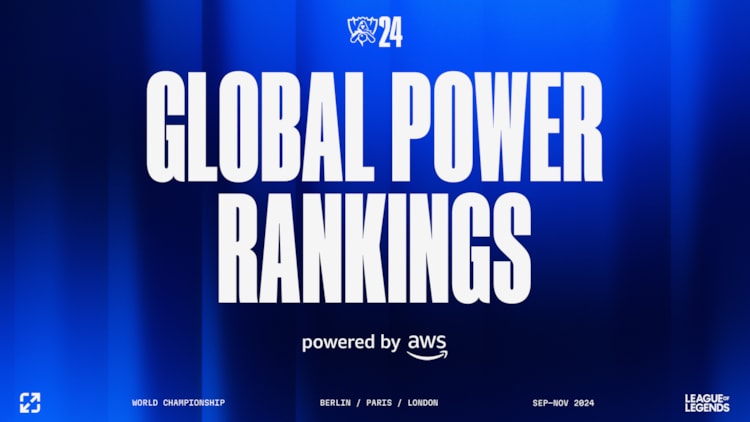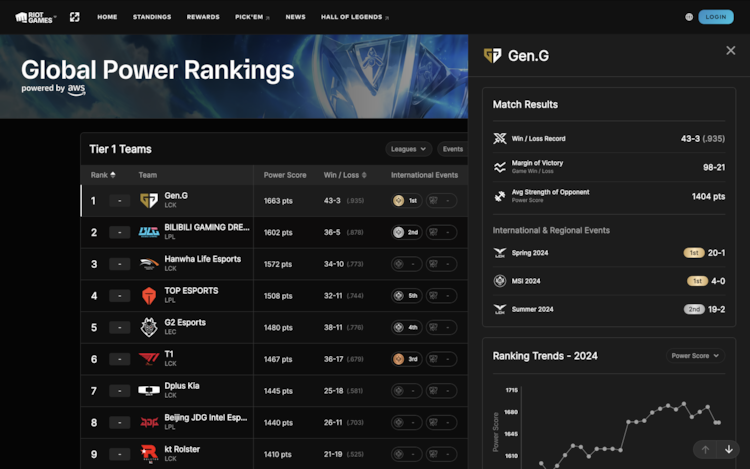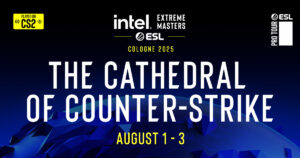Introducing LoL Esports Global Power Rankings, Powered by AWS

Get ready for a new, dynamic way to see how your favorite squad stacks up to the global field, starting with Worlds 2024
Today marks an exciting milestone in the world of League of Legends Esports as we unveil Global Power Rankings – a dynamic, data-driven rankings engine powered by Amazon Web Services (AWS) technology that aims to contextualize team strength across Tier 1 Leagues. Whether you want to see where your favorite teams stack up or get a better understanding of the competitive landscape more broadly, we hope that Global Power Rankings become a staple companion for the esport.
The Global Power Rankings provide a ranking system for all Tier 1 League of Legends teams worldwide. Built on an ELO-like model, this system evaluates not only individual team performances, but also the strength of the regions they hail from. The result is a comprehensive and transparent snapshot of the global competitive landscape, updated after every day of play during Worlds 2024.
Why the Global Power Rankings Stand Out
Global Power Rankings have been designed to address the specific challenges of League of Legends. We needed to make decisions that were heavily influenced by the fact that we have an ever-changing meta influenced by bi-weekly patch updates and the varying structures and skill levels across different leagues.
How It Works: The Elo Rationale
At the core of Global Power Rankings is a blended Elo metric, a weighted average between a team’s Elo and their league’s Elo. This approach ensures that the rankings are both simple enough to be easily understood yet sophisticated enough to account for the complexities of the game. The Power Score formula—where team Elo and league Elo are weighted at 80% and 20% respectively—was fine-tuned for optimal predictive accuracy.

Key Features
- Game-based Resolution: The model updates after every game in a series of matches. Meaning we take every game played during a regional split or international event into account.
- Contextualized Match Weighting (K Factors): International events are weighted more heavily than regional events, with knockout matches carrying more significance than group-stage matches. This ensures that high-stakes fixtures have a greater impact on rankings.
- Evaluation Windows: A three-year evaluation window for league Elo and a two-year window for team Elo allow the system to balance the impact of roster changes while maintaining a robust sample size of international games.
- Predictive Accuracy: The system’s ability to predict match outcomes has been rigorously tested, with results indicating a strong correlation between expected and actual outcomes.
Looking Ahead: Potential Enhancements
The Global Power Rankings are just the beginning. As we head into 2025, we are already exploring several enhancements, including:
- Incorporating in-game stats to adjust power scores based on match performance
- Introducing player-based power rankings to better reflect individual contributions
- Exploring more granular K-factors to further refine the system’s accuracy














